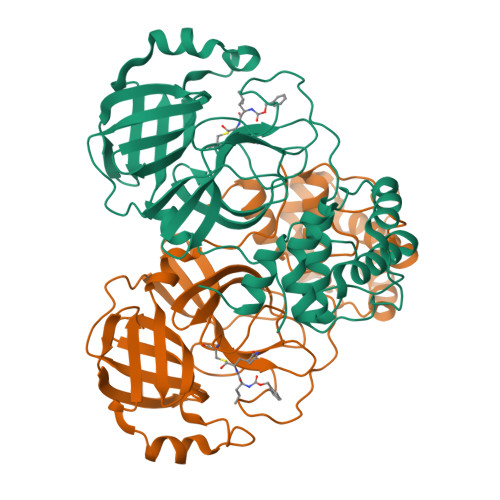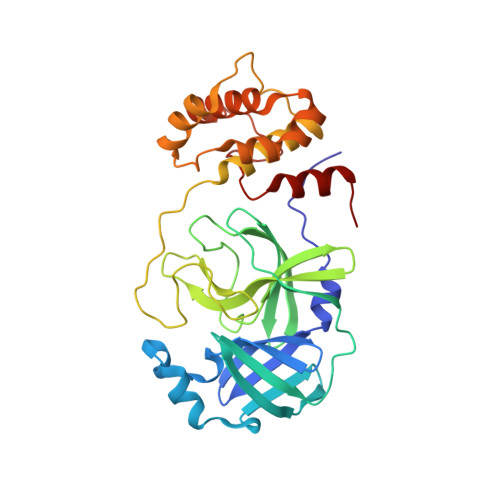Naturally Occurring Mutations of SARS-CoV-2 Main Protease Confer Drug Resistance to Nirmatrelvir.
Hu, Y., Lewandowski, E.M., Tan, H., Zhang, X., Morgan, R.T., Zhang, X., Jacobs, L.M.C., Butler, S.G., Gongora, M.V., Choy, J., Deng, X., Chen, Y., Wang, J.(2023) ACS Cent Sci 9: 1658-1669
- PubMed: 37637734
- DOI: https://doi.org/10.1021/acscentsci.3c00538
- Primary Citation of Related Structures:
8DCZ, 8DD1, 8DD9, 8DFE, 8DFN, 8DGB - PubMed Abstract:
The SARS-CoV-2 main protease (M pro ) is the drug target of Pfizer's oral drug nirmatrelvir. The emergence of SARS-CoV-2 variants with mutations in M pro raised the alarm of potential drug resistance. To identify potential clinically relevant drug-resistant mutants, we systematically characterized 102 naturally occurring M pro mutants located at 12 residues at the nirmatrelvir-binding site, among which 22 mutations in 5 residues, including S144M/F/A/G/Y, M165T, E166 V/G/A, H172Q/F, and Q192T/S/L/A/I/P/H/V/W/C/F, showed comparable enzymatic activity to the wild-type ( k cat / K m < 10-fold change) while being resistant to nirmatrelvir ( K i > 10-fold increase). X-ray crystal structures were determined for six representative mutants with and/or without GC-376/nirmatrelvir. Using recombinant SARS-CoV-2 viruses generated from reverse genetics, we confirmed the drug resistance in the antiviral assay and showed that M pro mutants with reduced enzymatic activity had attenuated viral replication. Overall, our study identified several drug-resistant hotspots in M pro that warrant close monitoring for possible clinical evidence of nirmatrelvir resistance, some of which have already emerged in independent viral passage assays conducted by others.
Organizational Affiliation:
Department of Medicinal Chemistry, Ernest Mario School of Pharmacy, Rutgers, the State University of New Jersey, New Brunswick, New Jersey 08854, United States.



















